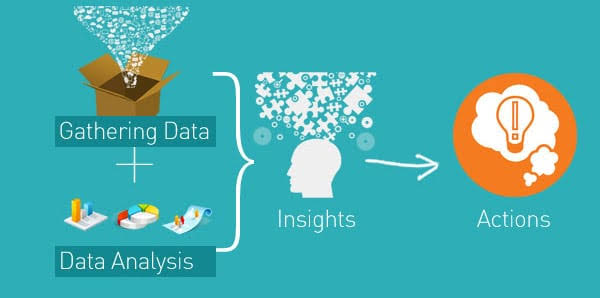Data has become one of the most valuable resources in today’s digital economy. Every interaction, transaction, and digital footprint creates data that, when analyzed properly, can provide deep insights into human behavior, business performance, and global trends. Organizations and individuals alike are recognizing that data analytics is no longer just a technical practice—it is a powerful decision-making tool. Understanding how to use data analytics for insights helps businesses optimize strategies, governments make better policies, and individuals make informed choices.
Understanding the Basics of Data Analytics
At its core, data analytics is the process of examining raw data to uncover patterns, trends, and actionable information. It involves several stages, including collecting, cleaning, processing, and interpreting data. Without analysis, data remains a collection of numbers with little meaning. But once processed, it becomes a story that can guide decisions.
There are different types of analytics:
- Descriptive analytics explains what has happened in the past using historical data.
- Diagnostic analytics digs deeper into why something happened by identifying causes and relationships.
- Predictive analytics forecasts future outcomes based on patterns and probabilities.
- Prescriptive analytics suggests actions or strategies that should be taken to achieve desired results.
Each type of analysis offers unique insights and is often combined to form a complete understanding of a situation.
Collecting Quality Data
The foundation of analytics lies in data collection. For insights to be meaningful, the data must be accurate, reliable, and relevant. Poor-quality data leads to misleading conclusions and poor decision-making.
Data can be collected from multiple sources, such as customer interactions, online surveys, sales transactions, website traffic, social media activity, and sensors in connected devices. The key is to ensure the data aligns with the goals of the analysis. For instance, a retail business seeking to understand customer behavior must collect data on shopping patterns, purchase history, and customer feedback.
Cleaning and Preparing Data
Raw data is often messy, incomplete, or inconsistent. Data cleaning is the process of correcting errors, filling missing values, and standardizing formats. Without this step, analytics may be flawed.
Preparation also includes categorizing and organizing data in a way that makes it easier to analyze. Tools such as Microsoft Excel, SQL databases, or more advanced platforms like Python and R are commonly used to prepare datasets. Effective cleaning and preparation ensure that analysis is built on a strong and reliable foundation.
Using the Right Tools and Technologies
The power of analytics lies in the tools that make sense of large datasets. Many organizations rely on business intelligence platforms like Tableau, Power BI, and Google Data Studio to visualize trends. Advanced users often leverage programming languages such as Python and R for complex data modeling.
Cloud-based solutions like AWS, Microsoft Azure, and Google Cloud provide scalable infrastructure for handling big data. These technologies allow organizations to process enormous amounts of information quickly and cost-effectively. Choosing the right tool depends on the complexity of the analysis and the goals of the project.
Visualizing Data for Better Insights
Visualization is a critical part of analytics because it transforms numbers into visuals that are easier to interpret. Charts, graphs, and dashboards help reveal patterns that may otherwise go unnoticed. For instance, a sales dashboard showing revenue trends across regions can quickly highlight which markets are growing and which need attention.
Data visualization not only helps analysts but also makes insights understandable for non-technical stakeholders. Clear and engaging visuals ensure that decision-makers can act confidently on the findings.
Applying Analytics to Business Decisions
Data analytics can be applied across industries to support decision-making. Businesses use analytics to understand customer behavior, improve operations, and increase profitability. For example:
- Retailers analyze purchase data to identify popular products and manage inventory.
- Healthcare providers use patient data to improve diagnoses and predict health risks.
- Financial institutions rely on analytics to detect fraud and assess creditworthiness.
- Governments analyze population data to plan infrastructure and social programs.
By turning data into insights, organizations can make evidence-based decisions that reduce risks and maximize opportunities.
Predicting Future Trends with Analytics
One of the most powerful aspects of data analytics is prediction. By analyzing historical data, predictive models can forecast customer demand, market movements, or even disease outbreaks.
For example, airlines use predictive analytics to adjust ticket prices based on demand and seasonality. E-commerce platforms forecast shopping behavior during holiday seasons to prepare logistics. These predictions allow organizations to stay ahead of competition and respond proactively to changing circumstances.
Building a Data-Driven Culture
Analytics is not just about tools and technology; it requires a cultural shift within organizations. A data-driven culture encourages employees at all levels to rely on evidence rather than assumptions. This means promoting data literacy, training staff in analytical thinking, and ensuring that decision-making processes are guided by insights.
Organizations that embrace data-driven cultures often achieve higher efficiency, innovation, and adaptability. They are better positioned to respond to challenges and identify new growth opportunities.
Overcoming Challenges in Data Analytics
While data analytics offers immense benefits, challenges remain. These include data privacy concerns, high costs of infrastructure, and the need for skilled professionals. Additionally, interpreting data correctly is critical, as poor analysis can lead to wrong conclusions.
Addressing these challenges requires a balance of investment in technology, training, and ethical practices. Protecting customer data and complying with regulations are also essential in maintaining trust while using analytics.
Conclusion
Using data analytics for insights transforms raw information into actionable knowledge. By collecting quality data, preparing it carefully, leveraging the right tools, and visualizing trends, organizations can make smarter decisions. Predictive capabilities allow for proactive strategies, while a data-driven culture ensures that insights are embedded into everyday operations.
In today’s fast-moving digital world, those who master data analytics gain a significant advantage. Whether in business, healthcare, finance, or governance, insights from data create opportunities for growth, efficiency, and innovation. Ultimately, the ability to turn data into meaningful insights is one of the most valuable skills in the modern era.



